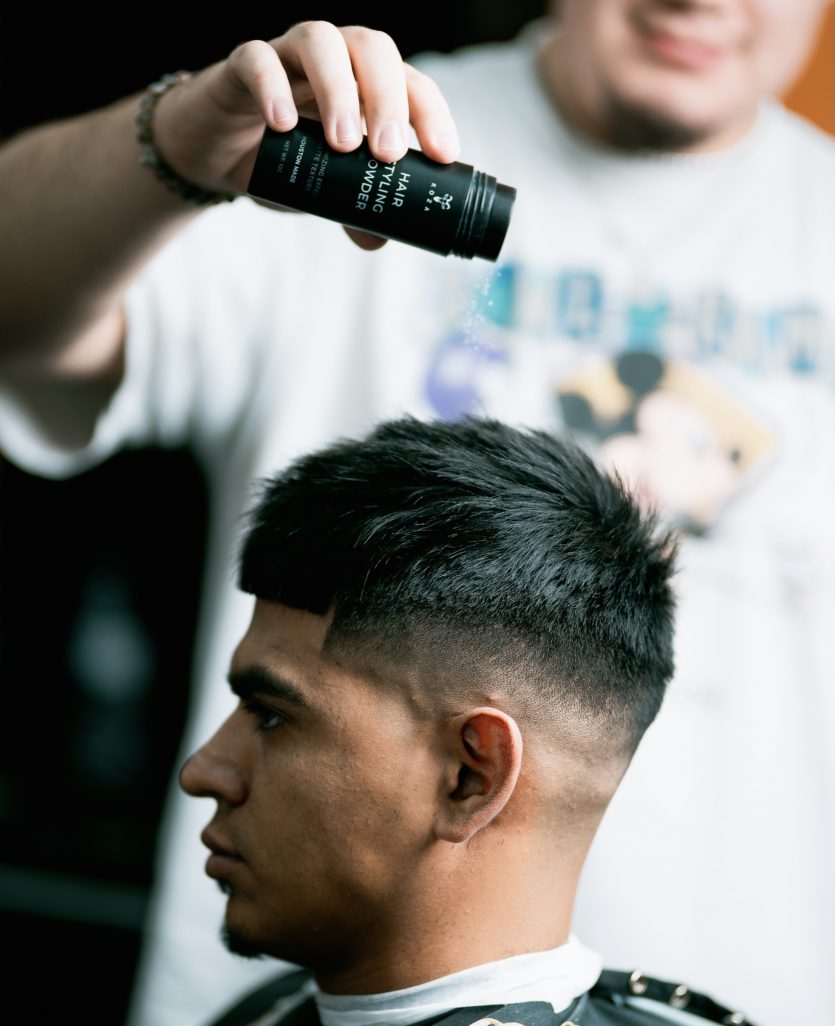Table of Content
Performance of hair dyes can vary depending on various factors including but not limited to amount of gray hair, thickness, and history of previous colors or chemical treatments. It is worth taking the time to do a strand test, to avoid unexpected and unwanted results. It will gradually become lighter, usually a dark chocolate brown color. Leave it on for around minutes and, if you're happy with the color, rinse it off.

Check out our post on how to find the best perfume online. Now that you know how to dye your hair the right way, you may be interested in other cost-effective ways to live your best life. Diving is the key to having a nice even, all over dye job. If you try to do everything at once, you’re almost guaranteed to end up with uneven color. If you want to have a professional looking dye job at home, you need to start off on the right foot.
L'Oréal Paris Excellence Triple Protection Permanent Hair Color
Most importantly, make sure you’re giving your hair enough recovery time and consider waiting a couple of days before doing another bleach treatment. For each of the sections that you've divided, you'll follow the below instructions. Kandasamy and Adams both recommend taking small portions within the sections of your hair and saturating the strands to make sure the hair is completely covered. When beginning to prep your hair Kandasamy recommends sectioning your hair in four parts. For added protection, rub coconut oil from the root to tip within sectioned hair to hydrate hair. The bleaching process can cause serious hair damage, but taking the due approach will ensure a smooth and safe experience.

Dye can dry out your hair, and color-preserving shampoo and conditioner often have vitamin A and vitamin E to help lock in moisture. If you’re not happy with your hair color, it’s best to see a salon colorist who can help you fix it. The conditioner that comes in dye kits is specially formulated for color-treated hair.
How to dye your hair blond (or blonder):
Once the part is in place, split your hair into four sections. But if you follow the tips in this post, you’ll be sure to have a great hair dying experience. “Think of color-enhancing glosses as a topcoat for your hair,” says Hill. “They add shine and deposit a transparent coat of color.” Try a lightweight formula like one of these every week. To get the exact results you want, pore over the "before" shades on the box labels when shopping—and make sure your starter color is a match. The bathroom is generally the best place to work, especially if you have a window that lets in natural light.
The dye will blend more naturally with your hair, and that tends to make it last longer. When the weather outside is frightful and multiple layers are essential, it’s easy to get discouraged when putting together an outfit each morning. If you could use a little style inspiration, turn to Pantone. Remember the color wheel from elementary school, this is where that comes to play. Toner will help neutralize any brassiness or yellow hues that will be lingering in your hair after bleaching. As far as the skin on your face goes, “Applying vaseline along your hairline will help create a barrier and keep your skin protected from bleach,” says Kell.
Featured Articles
Follow the instructions to combine the dye ingredients into the bottle provided. Then, shake the solution until the ingredients are well combined. When you finish with the bottom sections, start applying the bleach on the top. Once all the strands are covered in the bleach, go back to saturate the roots. Finally, put on a shower cap or plastic bag and let the bleach sit. Processing time depends on the product you use and the desired result, so make sure you carefully read manufacturer recommendations.
It may help pull some of the color out, but it will also be drying, so if you try this, follow up with a deep-conditioning treatment. In fact, giving your hair some extra pampering is warranted right now, to reduce the likelihood of additional breakage. "Many times the problem stems from hair being dry," Everett says. "I recommend a deep-conditioning mask to add moisture and make strands more cooperative." For those tempted to use an at-home relaxer, the experts we interviewed advise against it.
Once you have prepared your hair, you can then apply the hair color. Be sure to follow the instructions on the hair color box to make sure that you are applying it correctly. Bleaching your hair can seriously damage it, and it’s much more difficult to dye bleached hair than it is to dye hair that has not been bleached. If you want to dye your hair a lighter color, it’s best to bleach it first and then dye it the color you want. If you are coloring your hair, you should consider the condition of your scalp. You should not dye your hair if your scalp is irritated.

On the days you can't, use as little shampoo as possible or, better yet, rinse hair with warm water and use just conditioner. Your scalp will have built up enough natural oils to protect your skin from irritation. Washing your hair removes those natural oils, so it’s best to wait 2 days before dyeing. One exception is African American hair, where experts recommend focusing mostly on covering any gray you'd like to camouflage or going a bit darker, using semi- or demipermanent hair color. This is probably the best bet for anyone who's hoping to be back in the salon in the not-too-distant future (and who's less than about 25 percent gray).
It’s okay when hair looks yellow — it just needs further toning or a bleach bath. If you end up with dark, orange hair, you might need to re-bleach it, though. To avoid significant damage, it’s crucial to give your tresses enough time for recovery, so wait for at least three days before another session. The hair close to the scalp processes faster due to your body heat, so you risk making the first inch of your hair look a level lighter than the rest of the hair. To avoid “hot roots”, apply the product one inch away from the scalp on the entire head.

If all that's really bothering you is visible roots, you might be able to get away with simply concealing them until you can get to the salon for your color. Experts recommend sticking to those powders and sprays with a powdery finish, rather than waxy crayon-like concealers. After your hair is dry, style it as you normally would and show off your new hair color! If you are unhappy with your results, you may want to see a hair stylist for color correction. It is also a good idea to wait at least two weeks to color your hair again.
Are designed to perform when used as instructed, and mixing colors may lead to undesirable results. Given the unpredictability of how oxidative dyes may react to one other, it is best to pick the exact shade you want from the beginning and not take any risks. No shampoo is totally color-safe, since all shampooing requires wetting hair — and water itself strips dye, Wizemann says.
Better to have too much than not enough (especially once you’ve already got the dye on!). It would be pretty counterproductive to wash all of the “gunk” out of your hair, just to put more back in, right? If it’s not really hot or humid, a wig can work as well.
If you’re not sure how to apply the dye, be sure to ask a friend or family member for help. There are a few different types of hair dye to choose from, so be sure to pick the right one for your hair type. If you have thick hair, you’ll need a dye that is designed for thick hair. If you have thin hair, you’ll need a dye that is designed for thin hair. How long you should leave hair dye in for can depend on the type of dye and the desired outcome. Generally, the longer you leave dye in, the more intense the color will be.

No comments:
Post a Comment